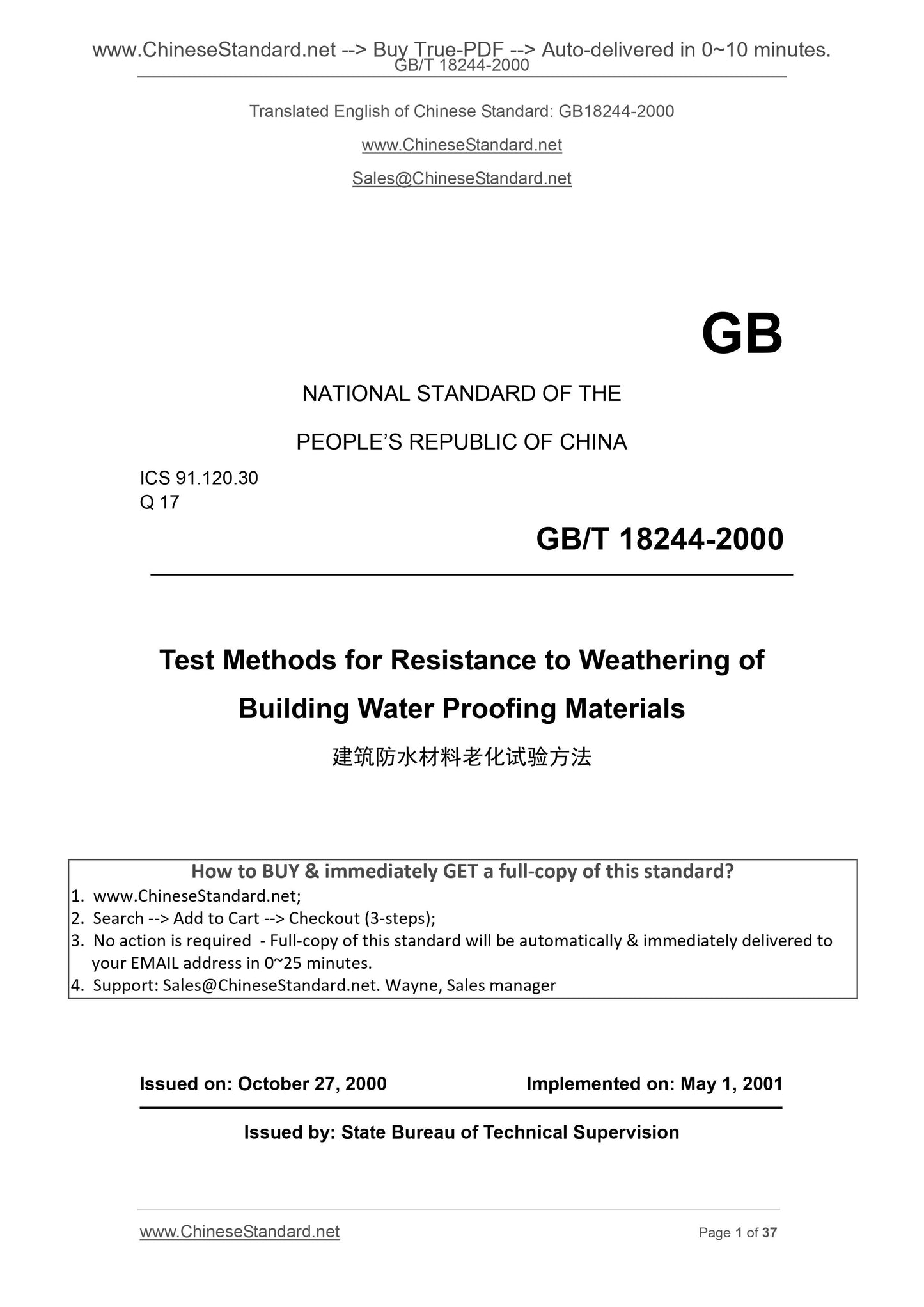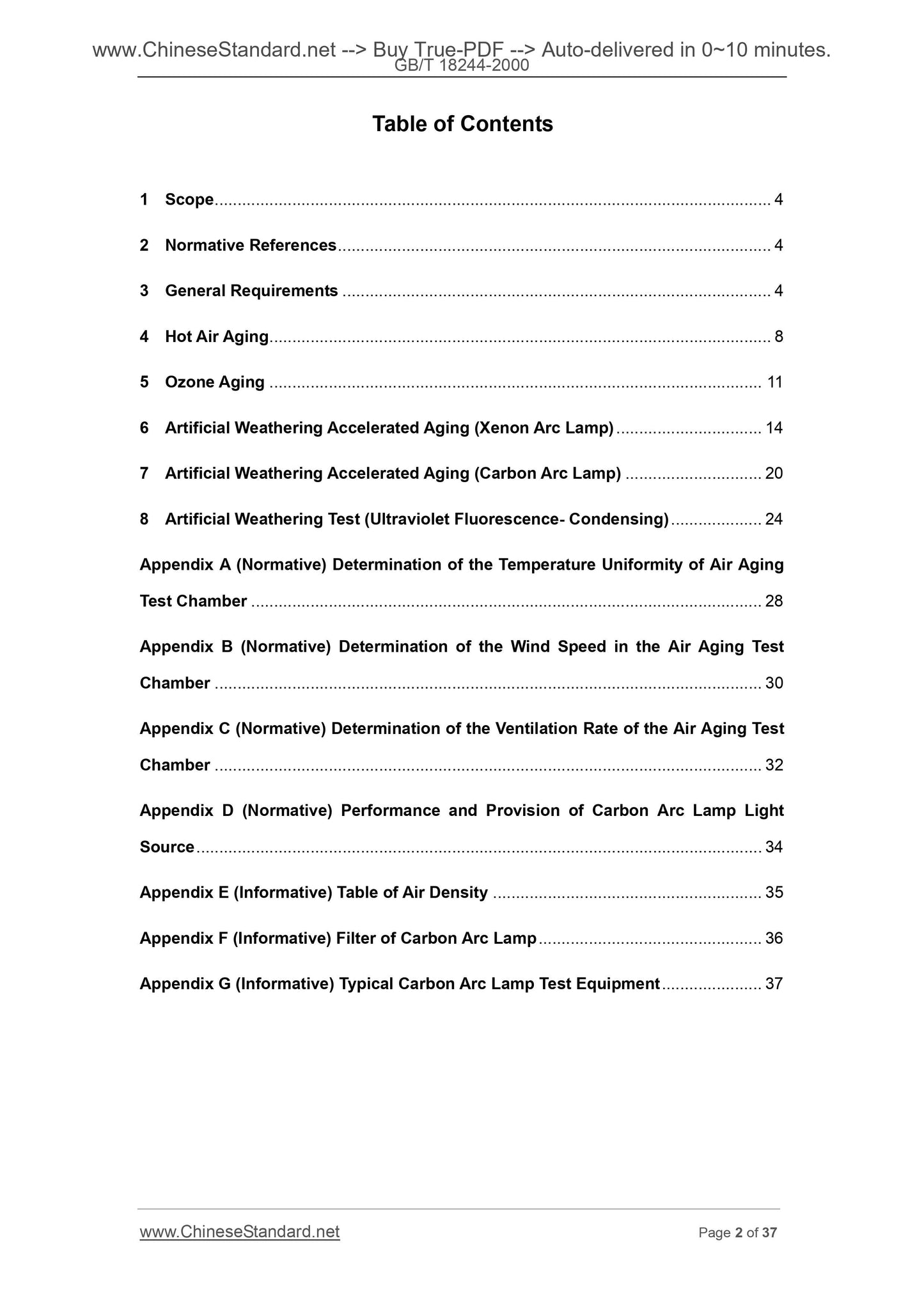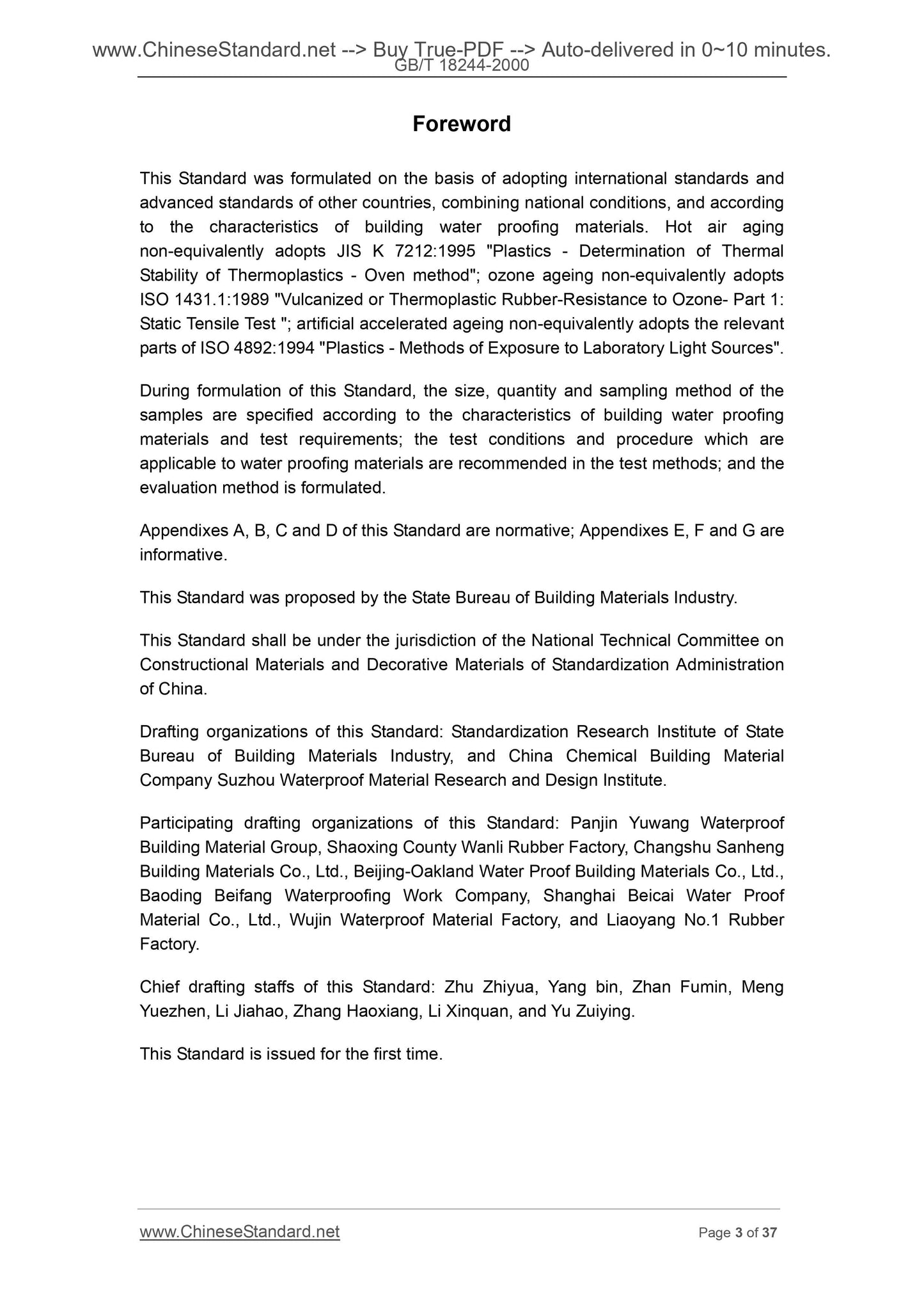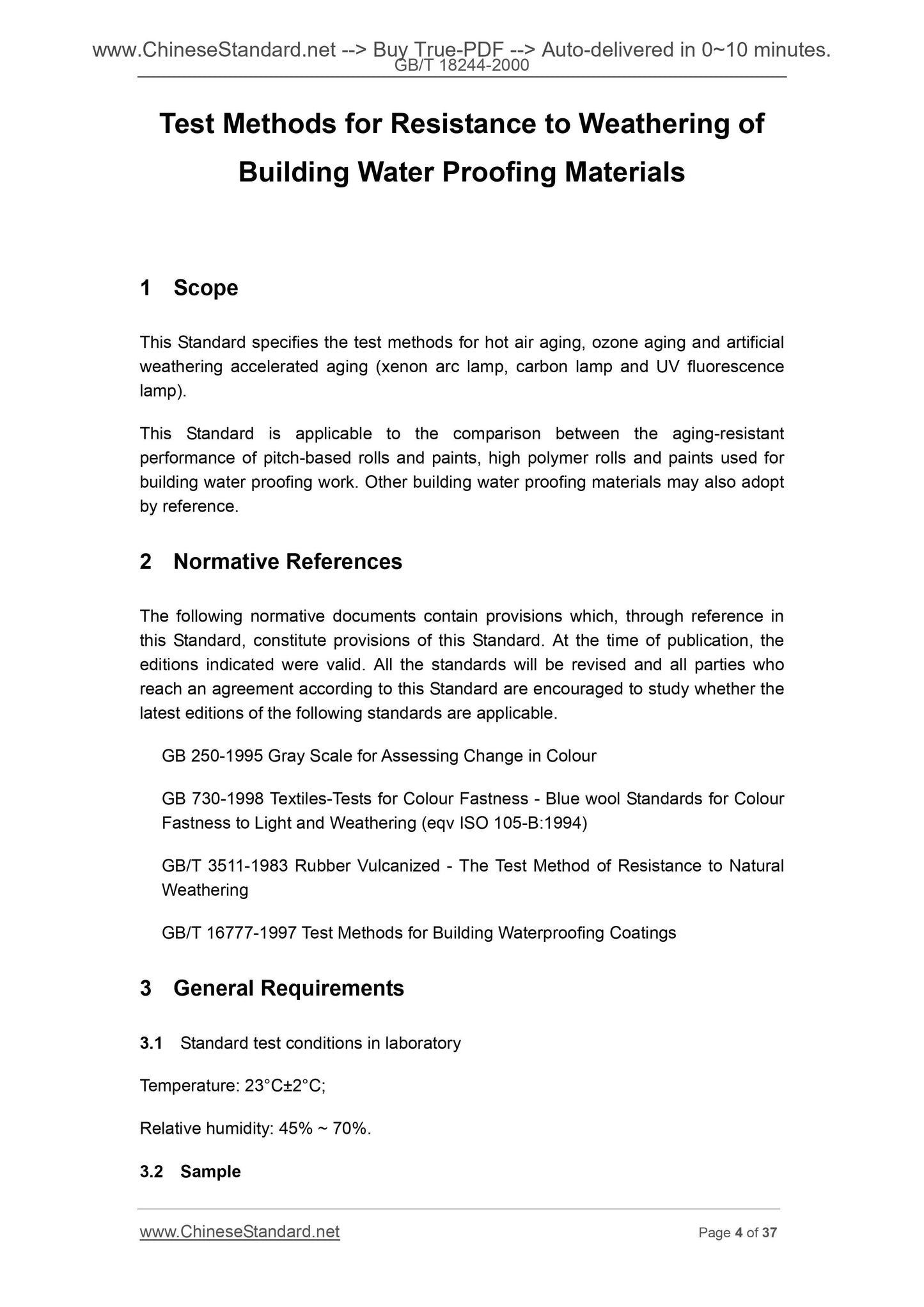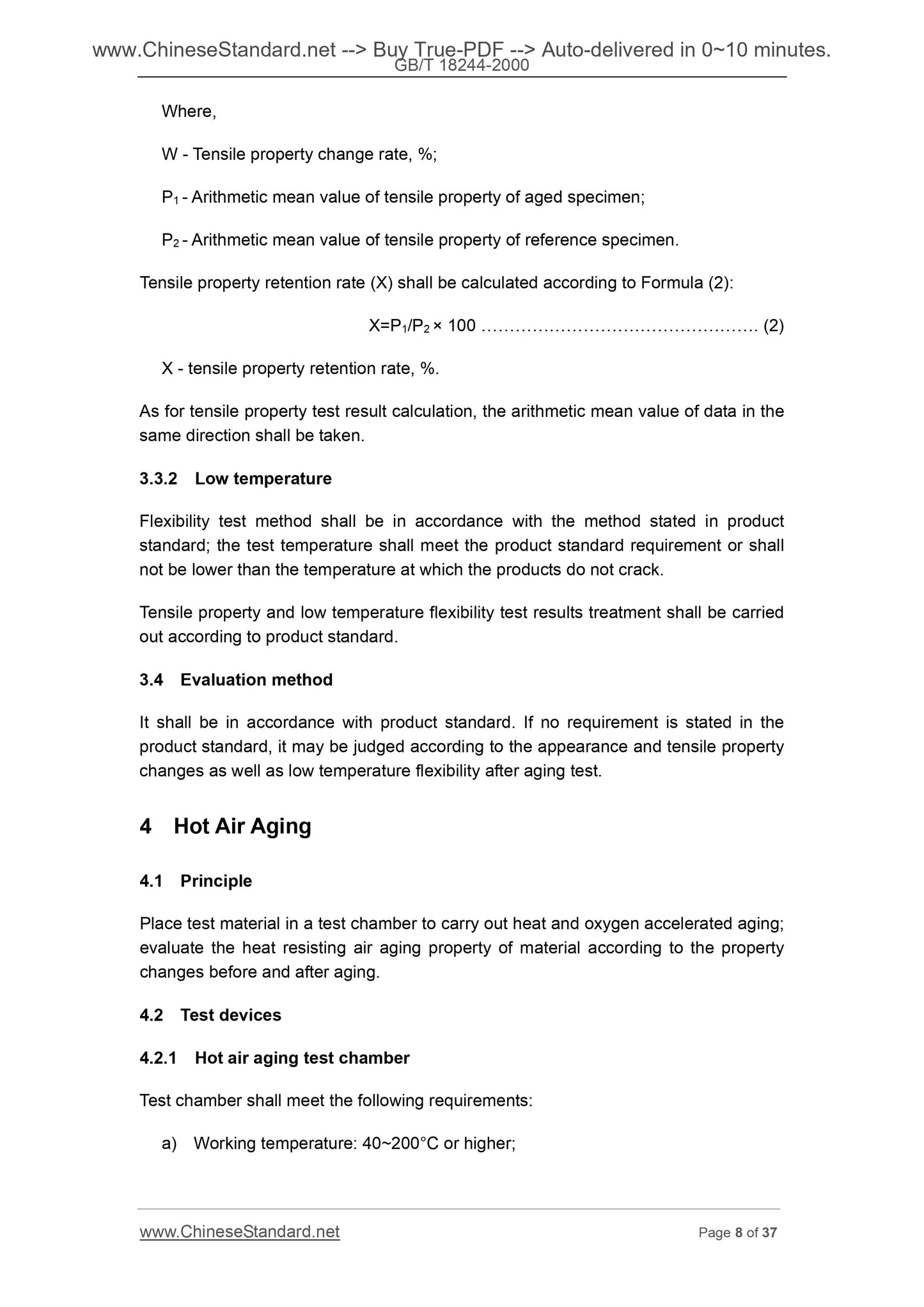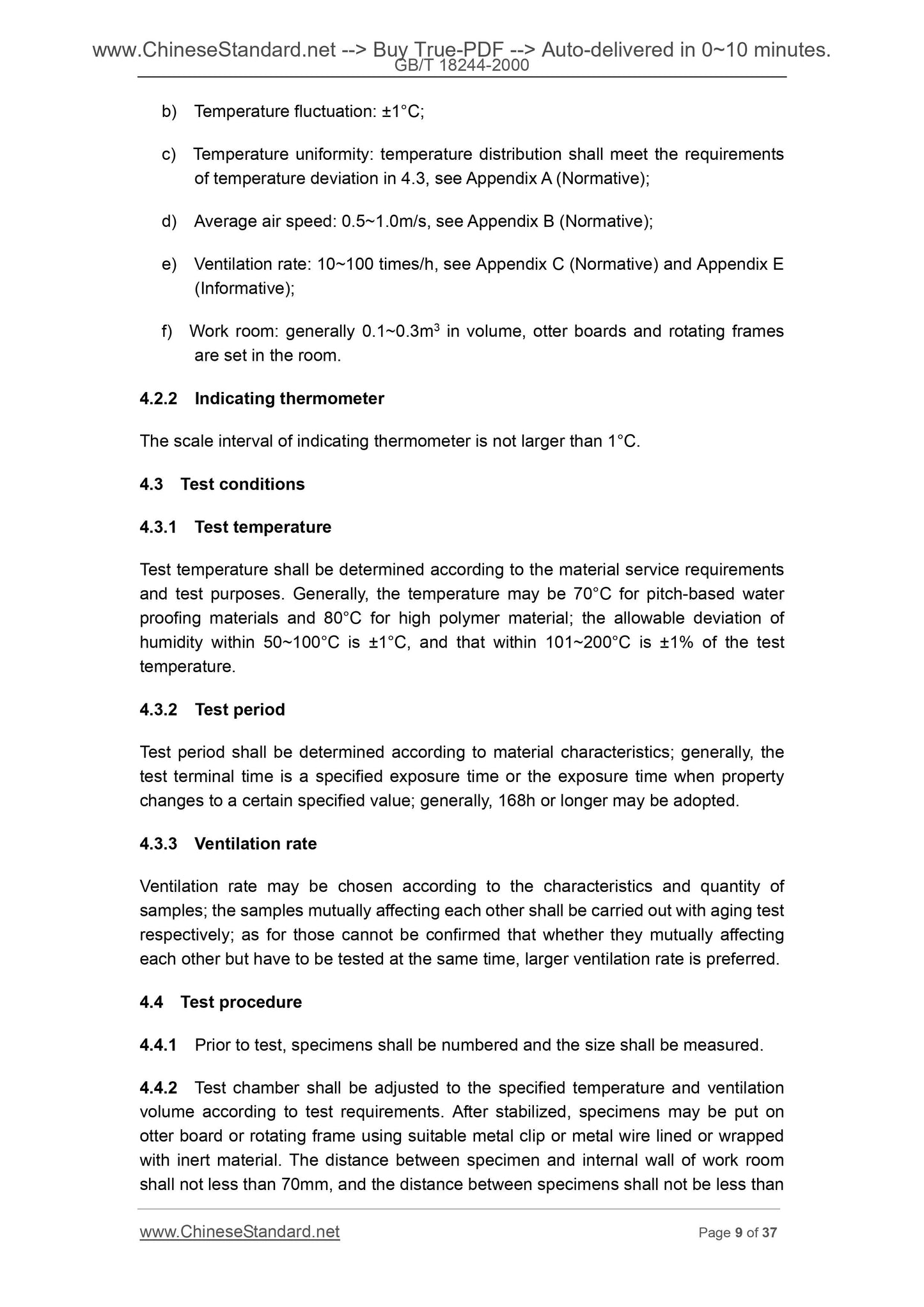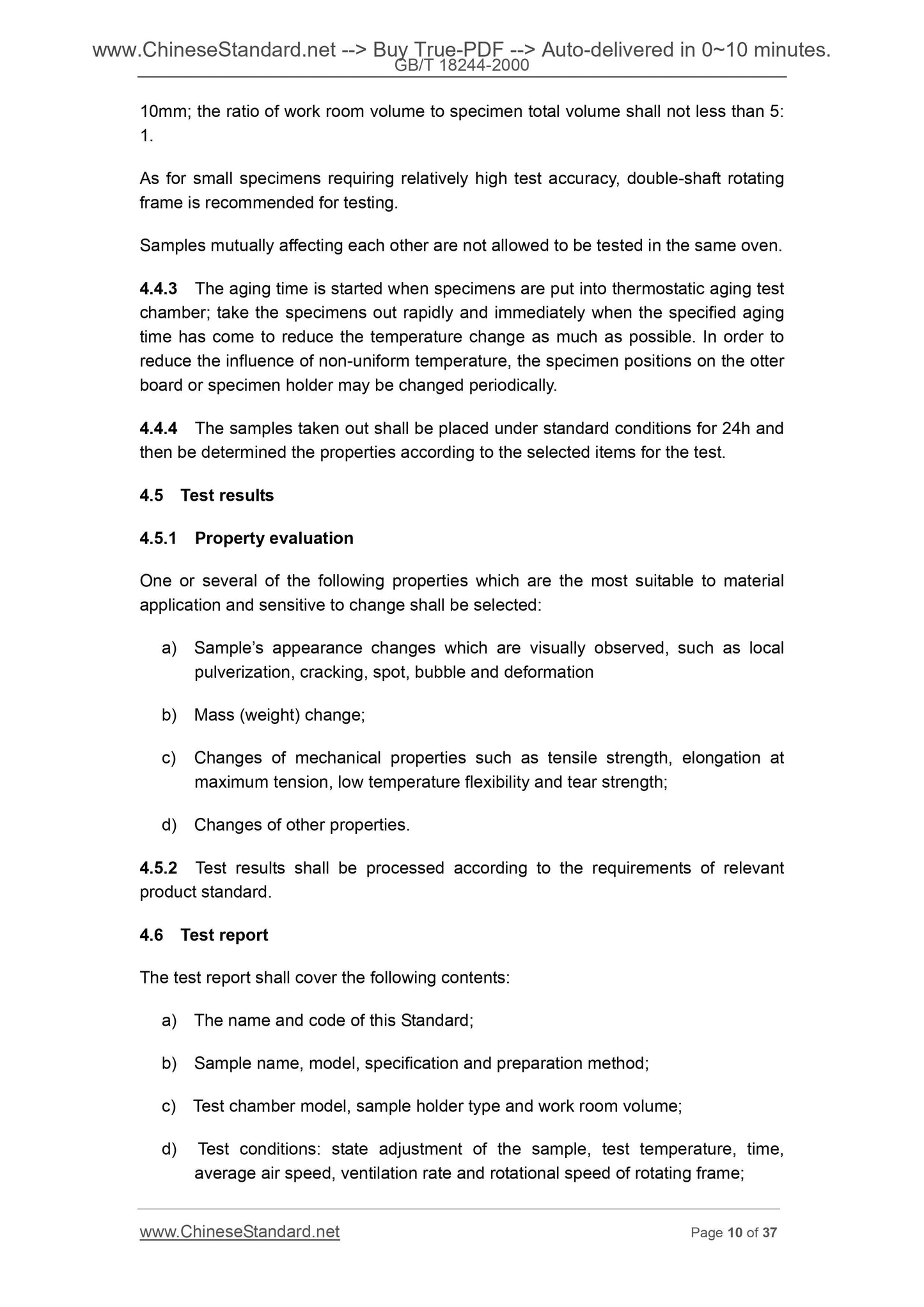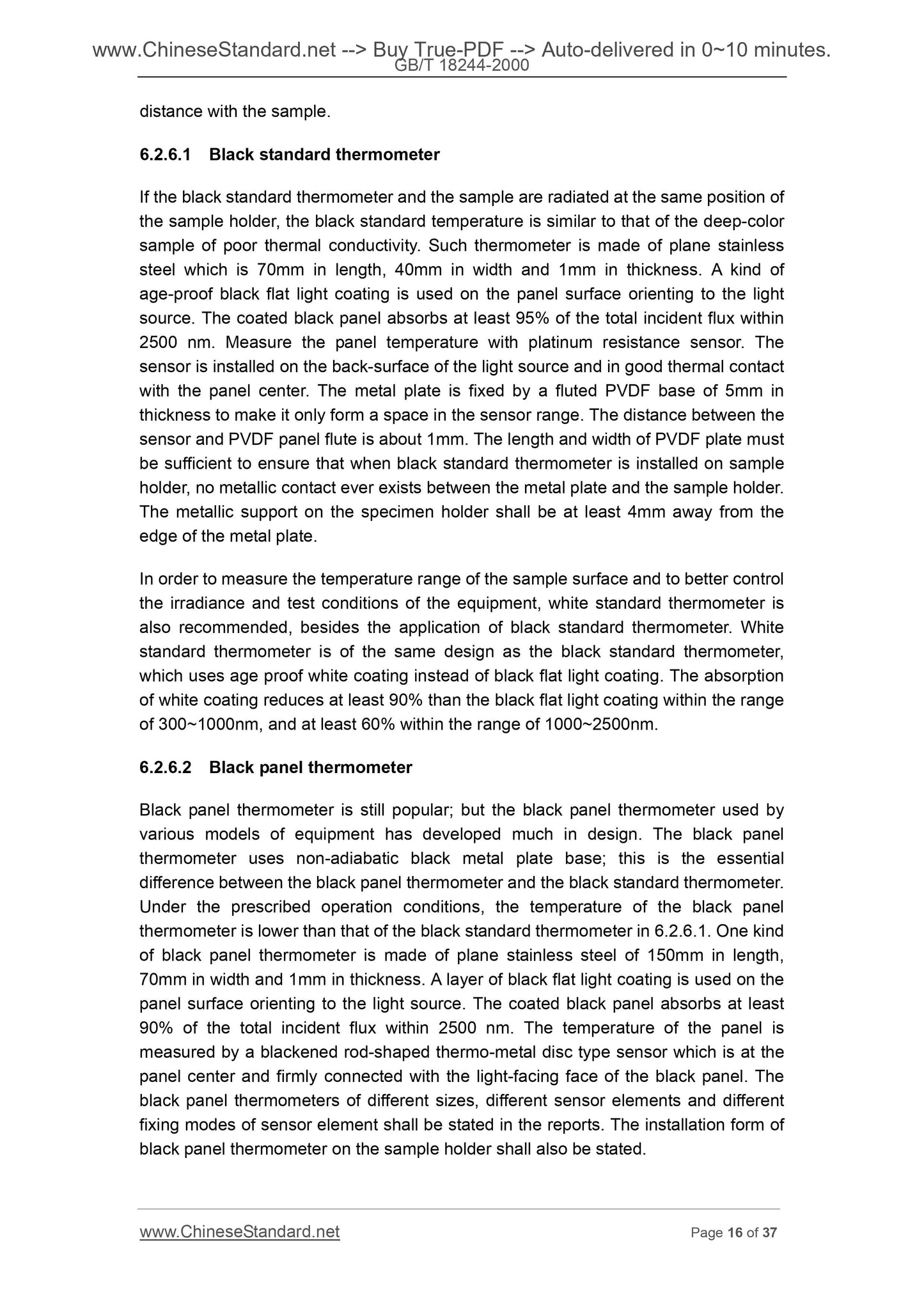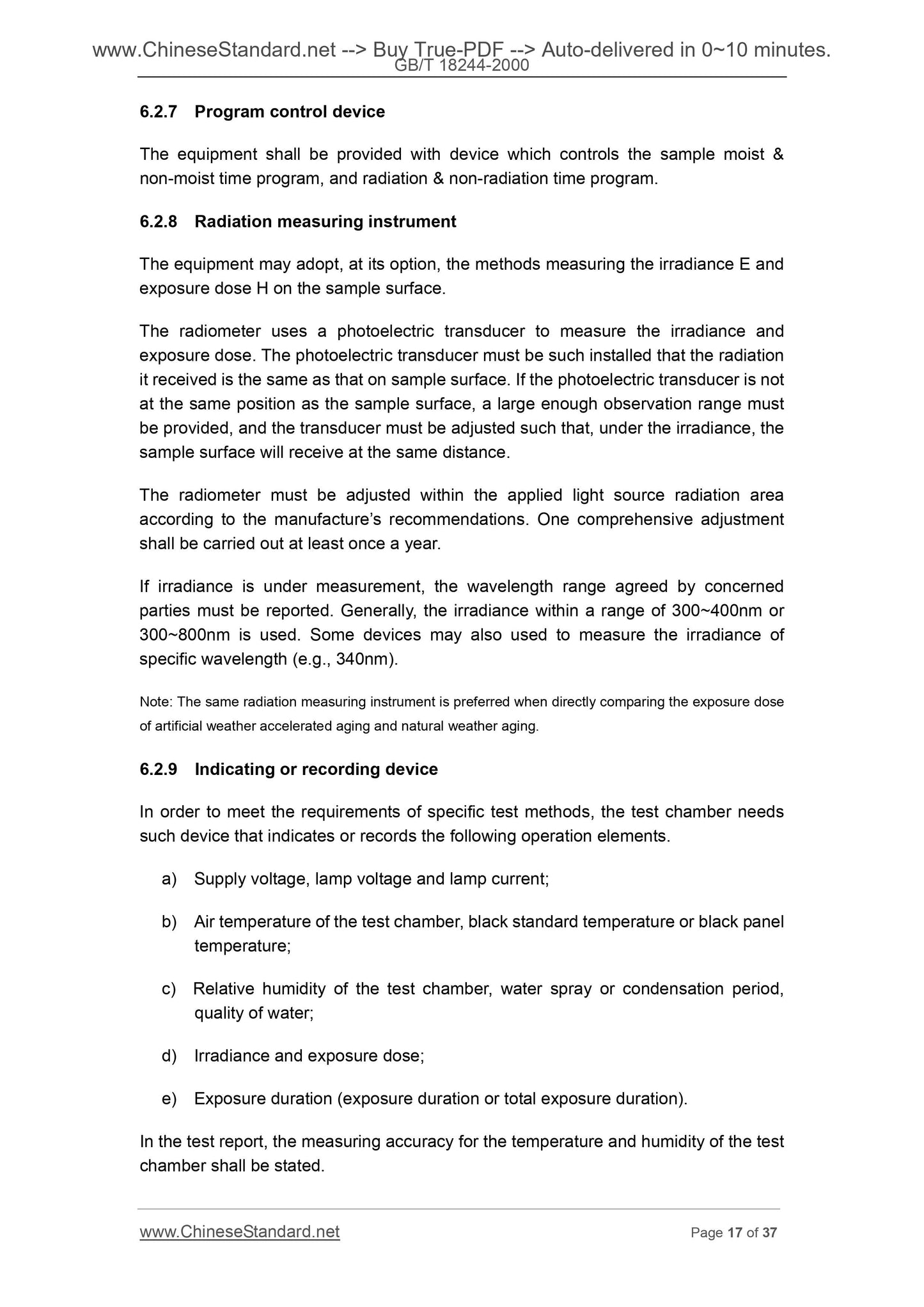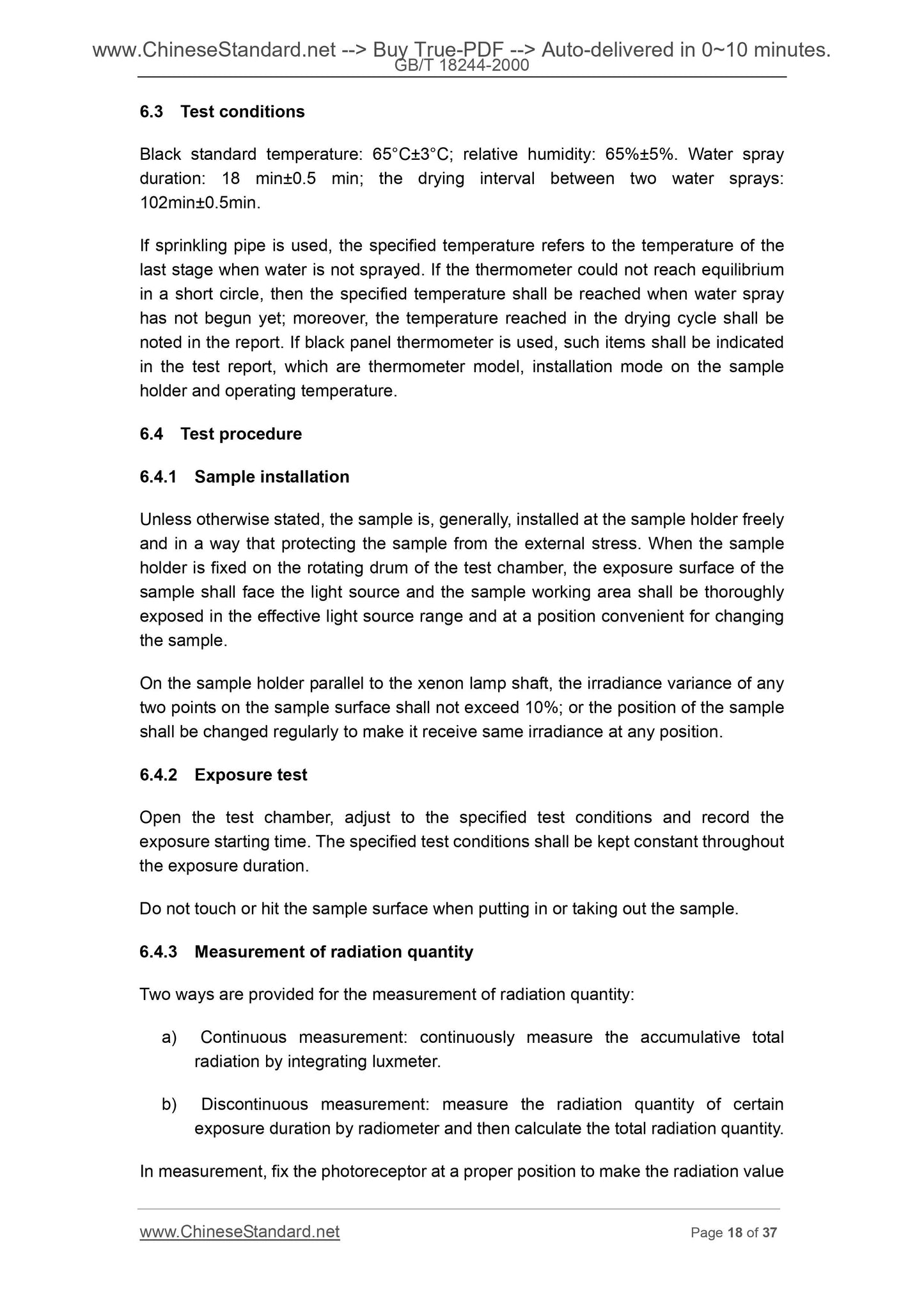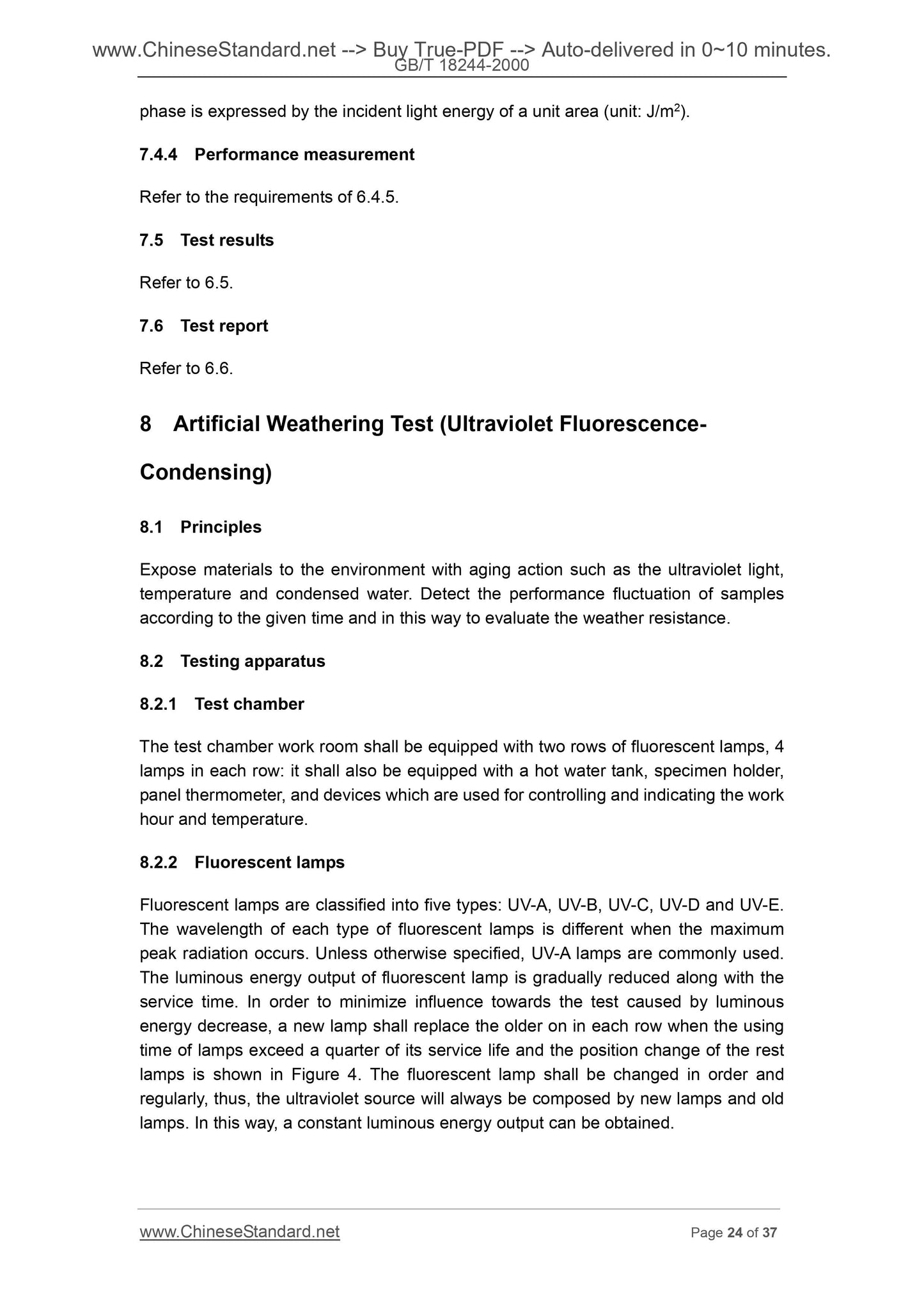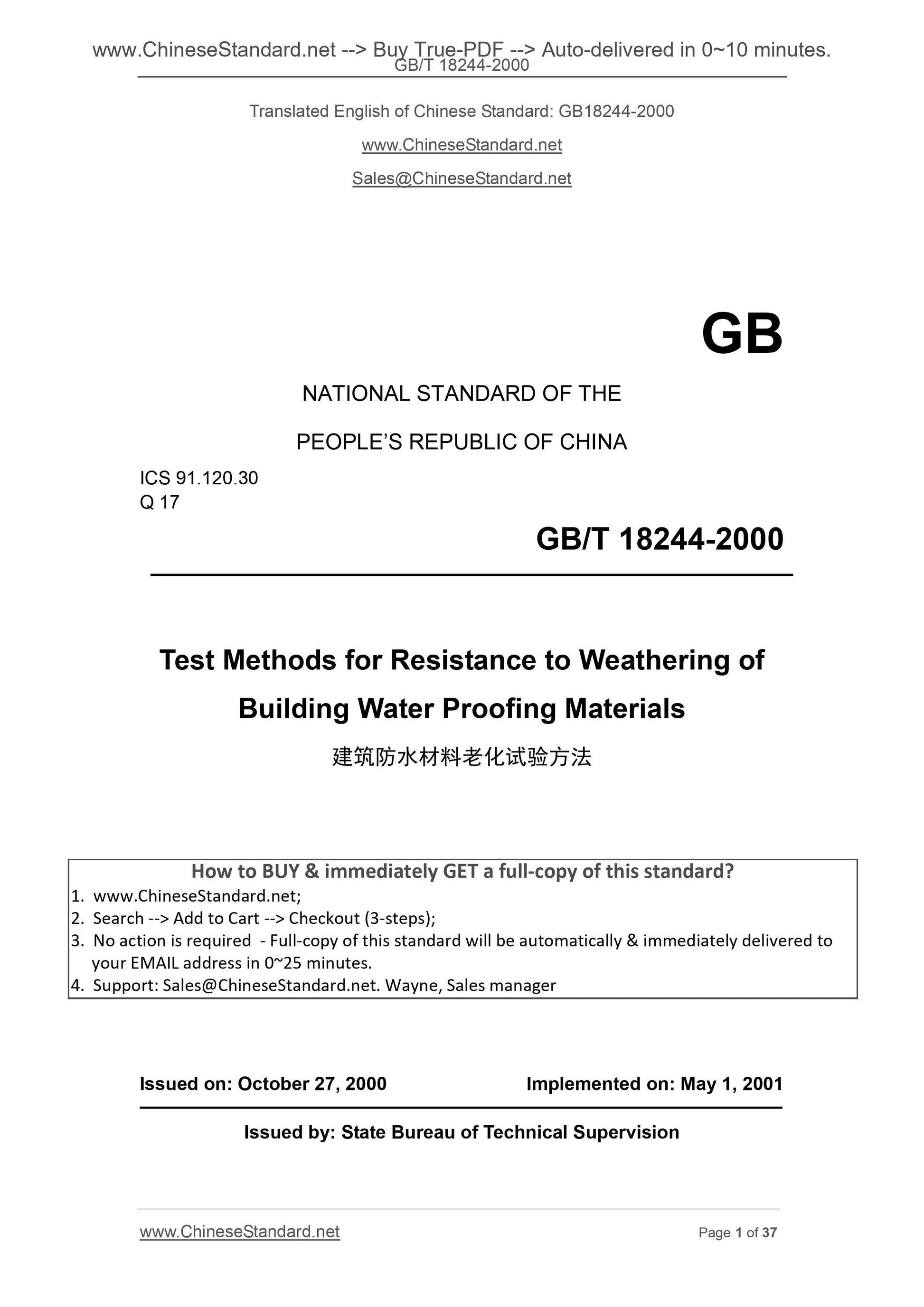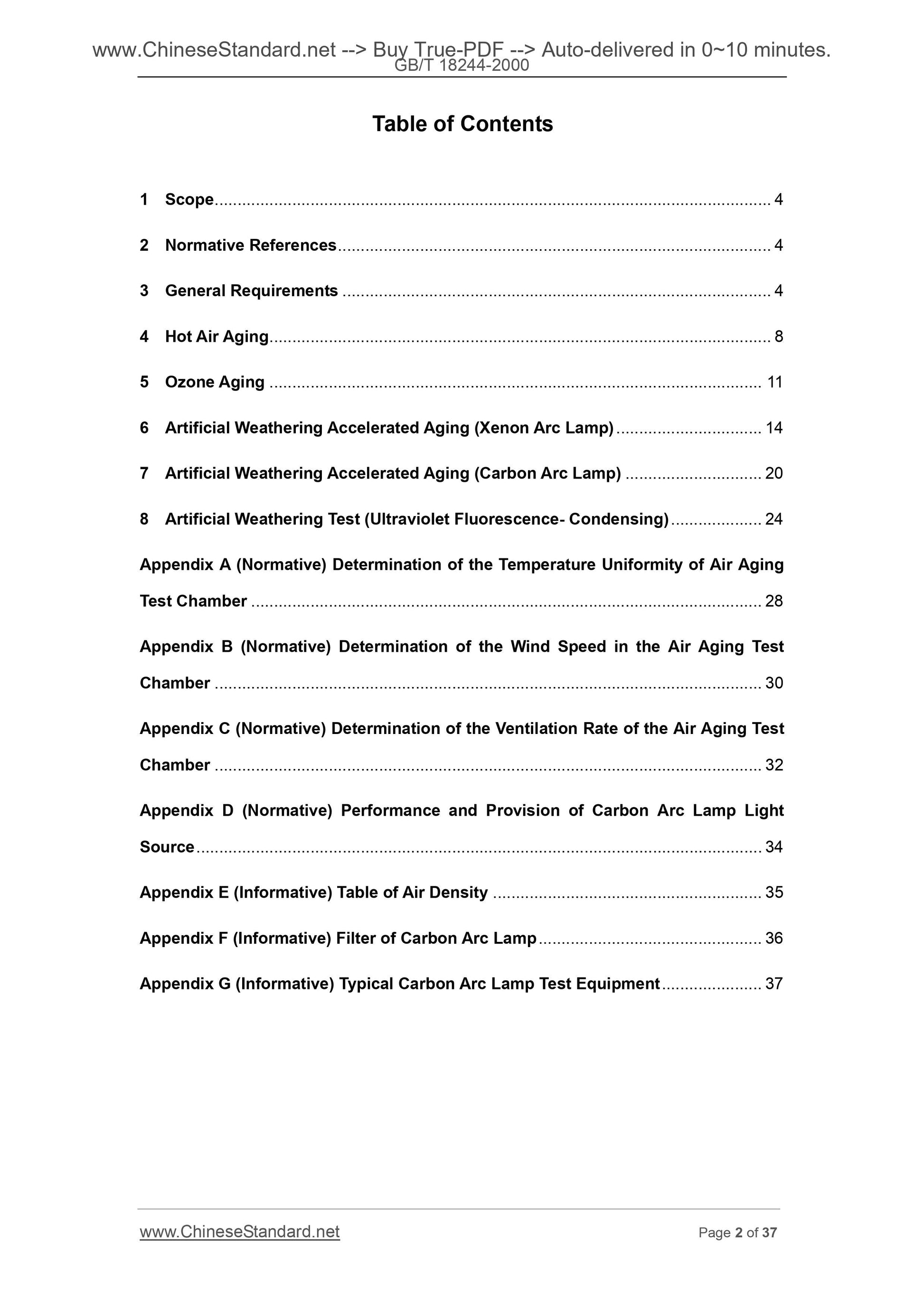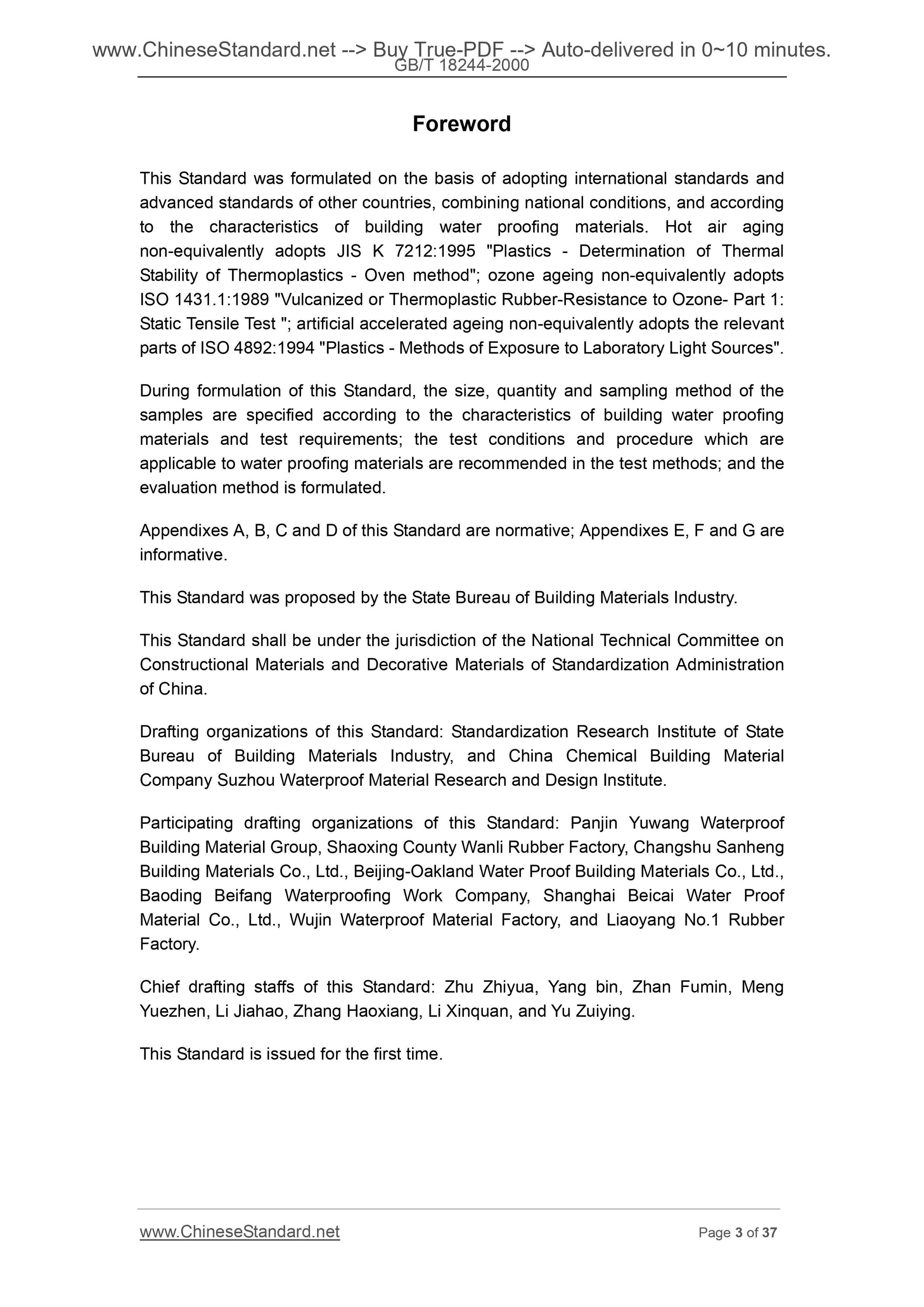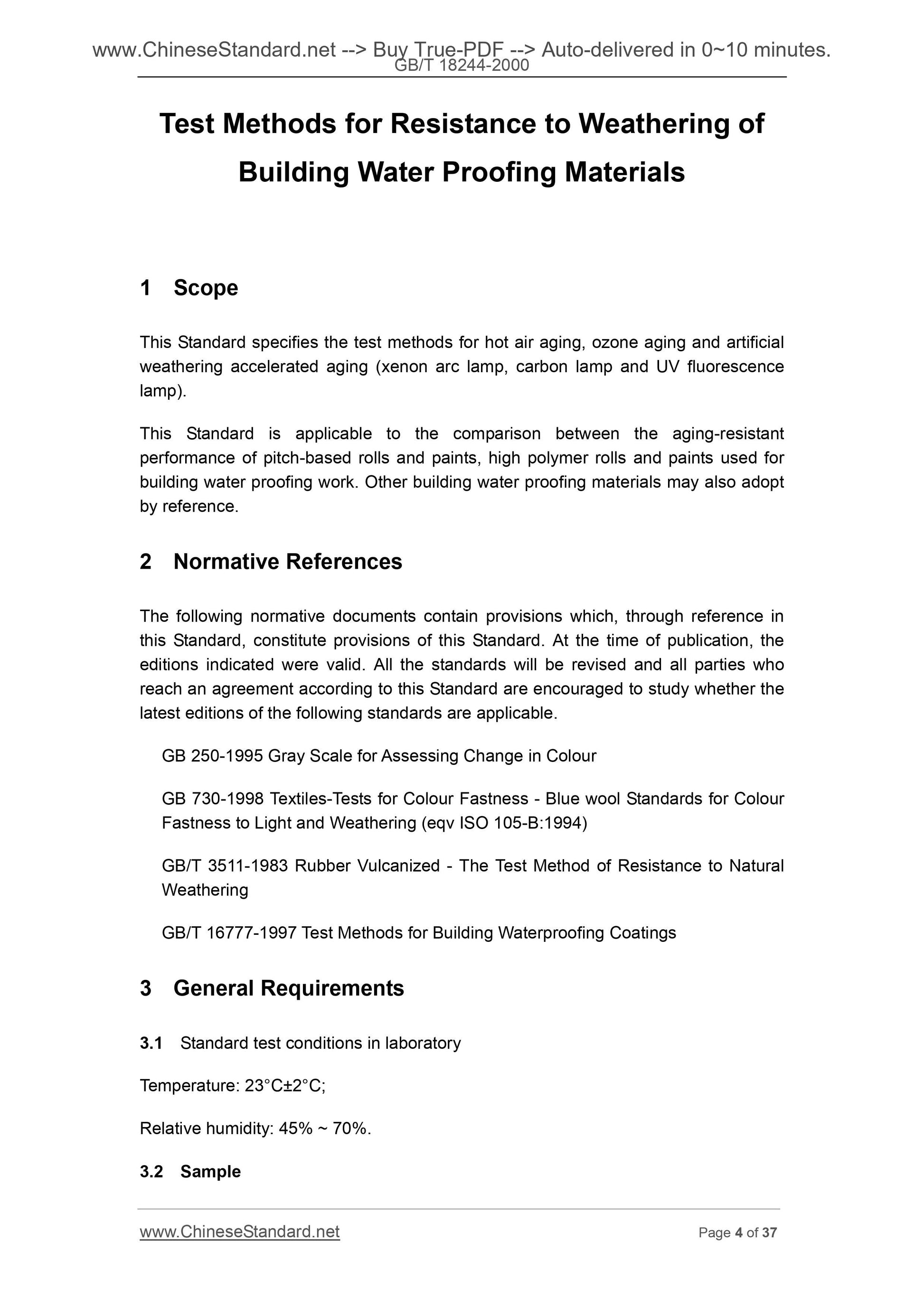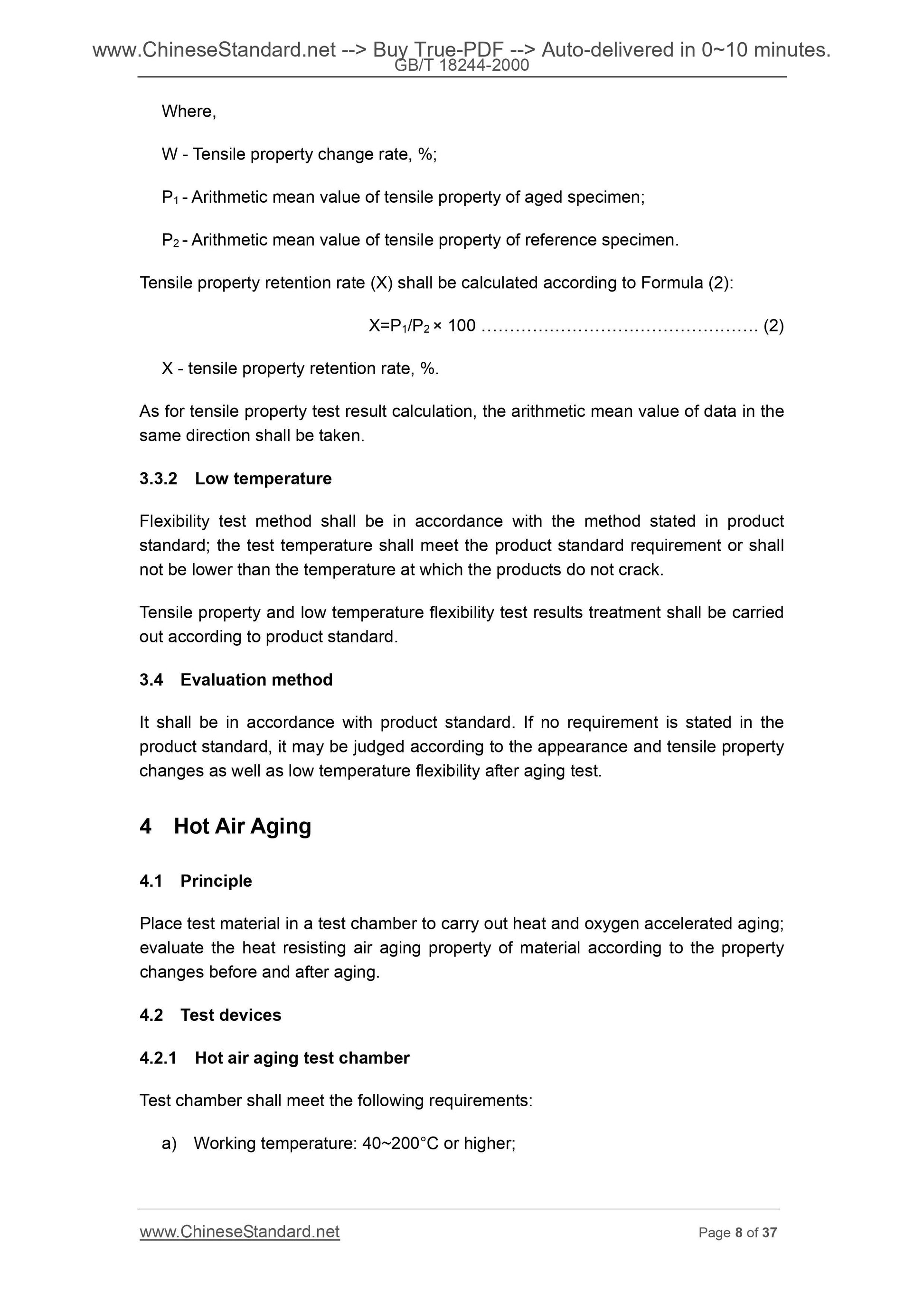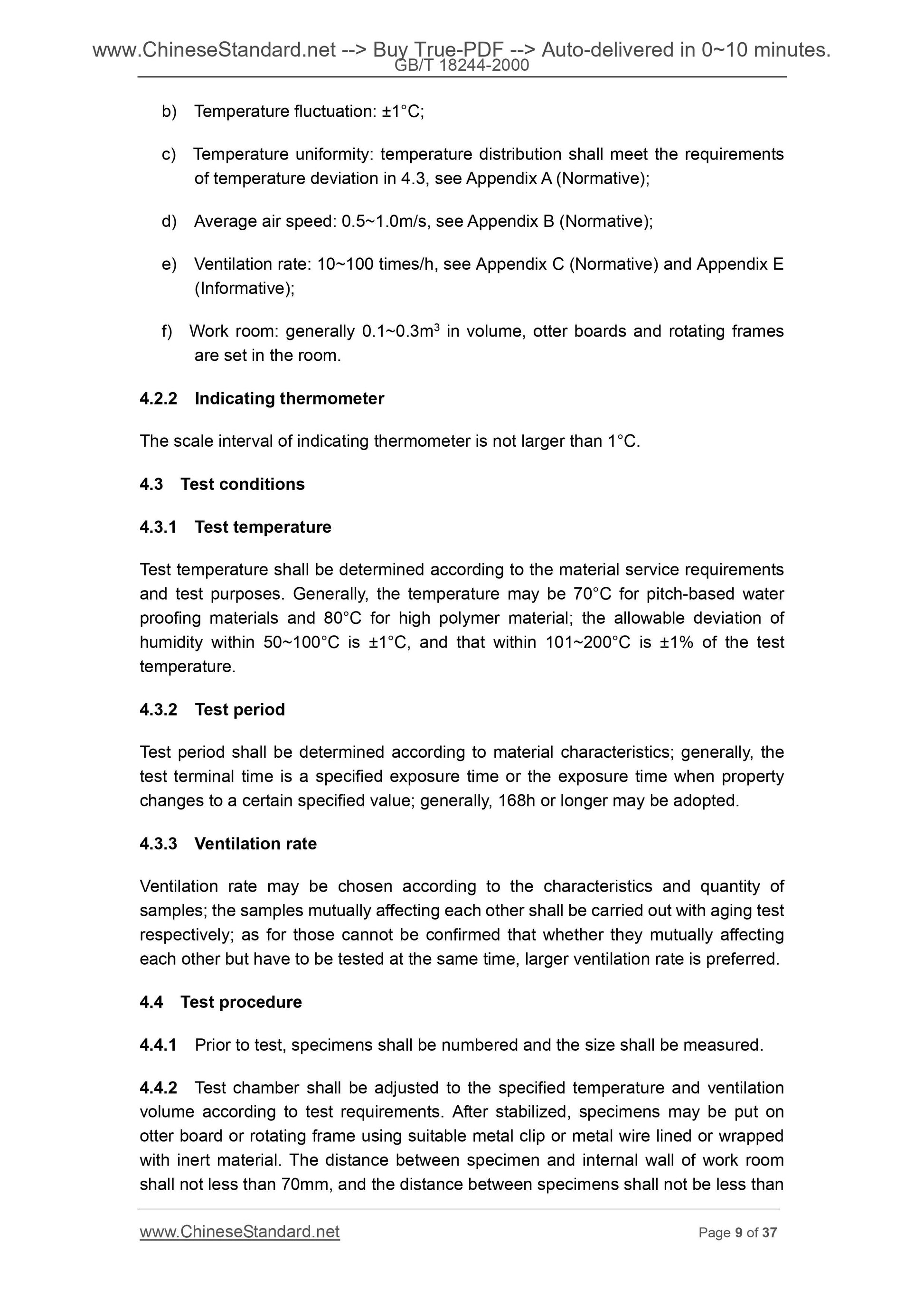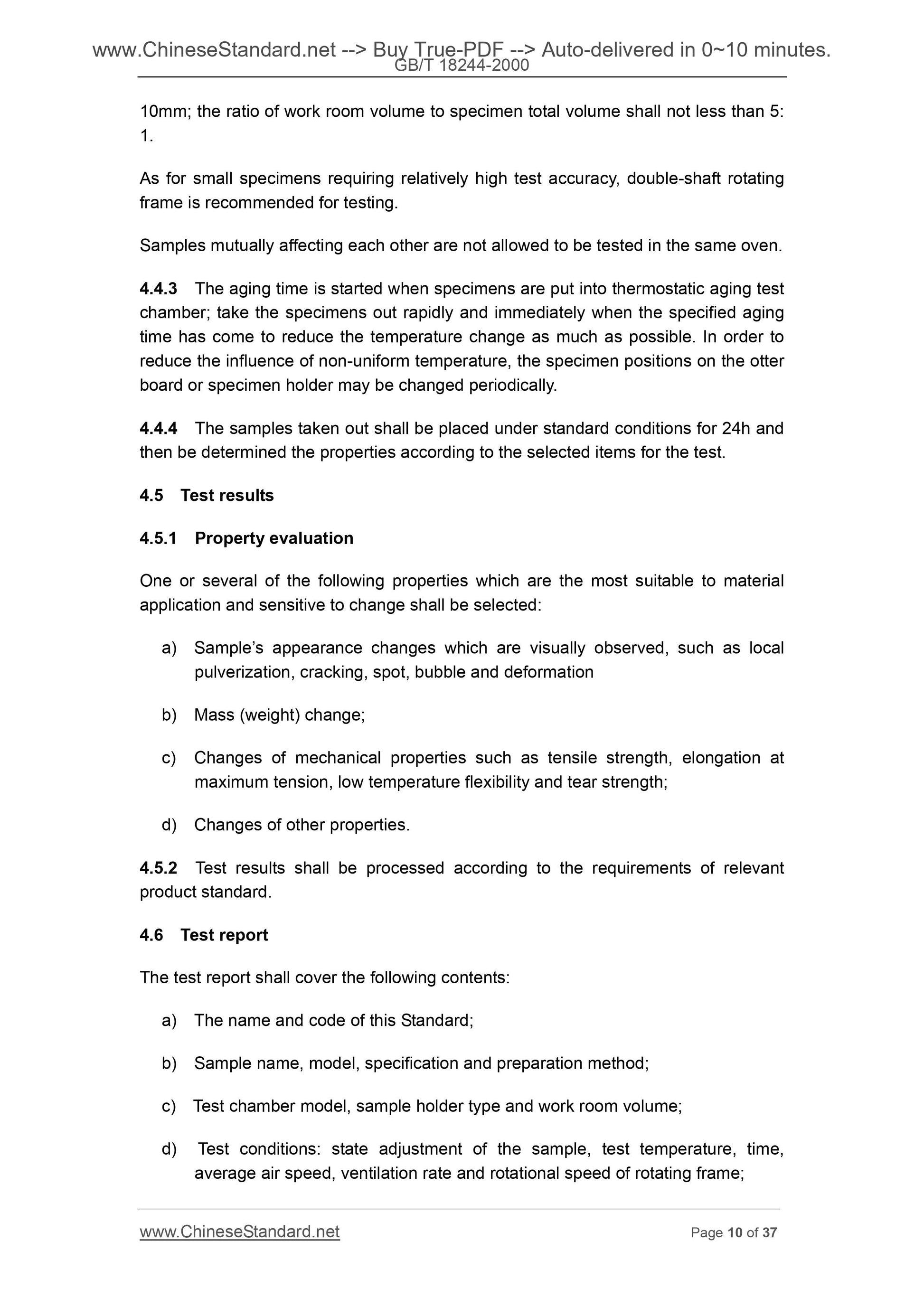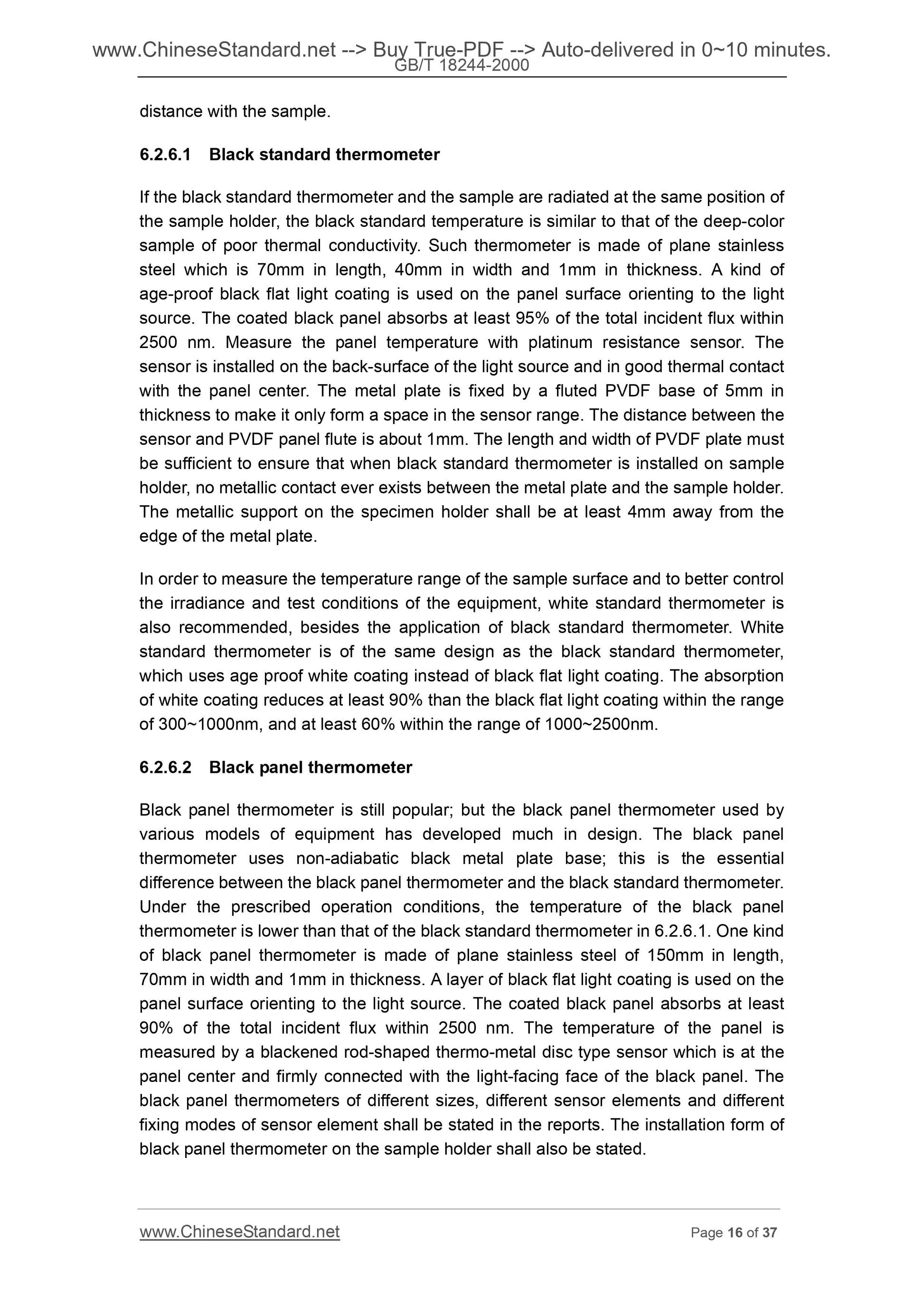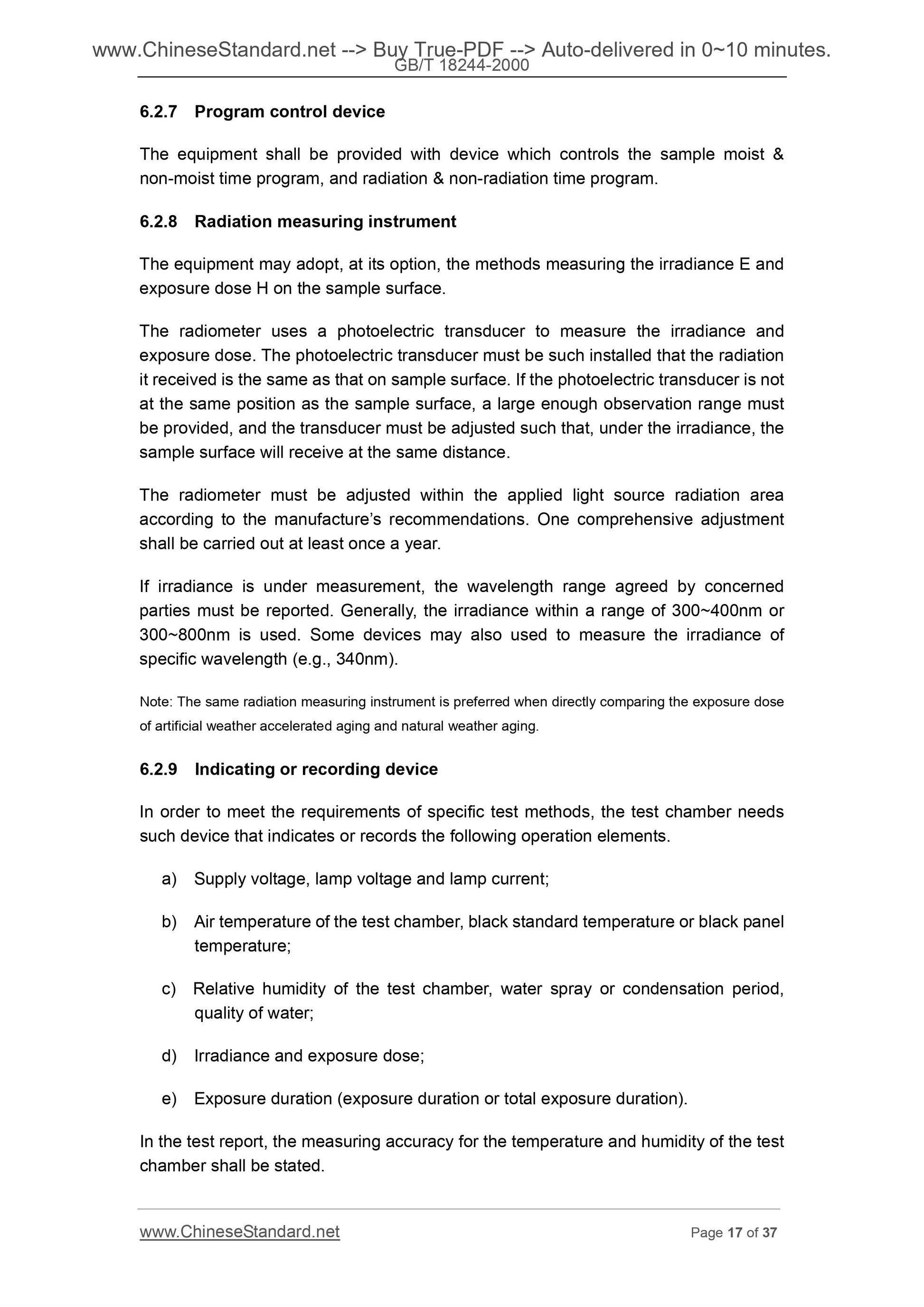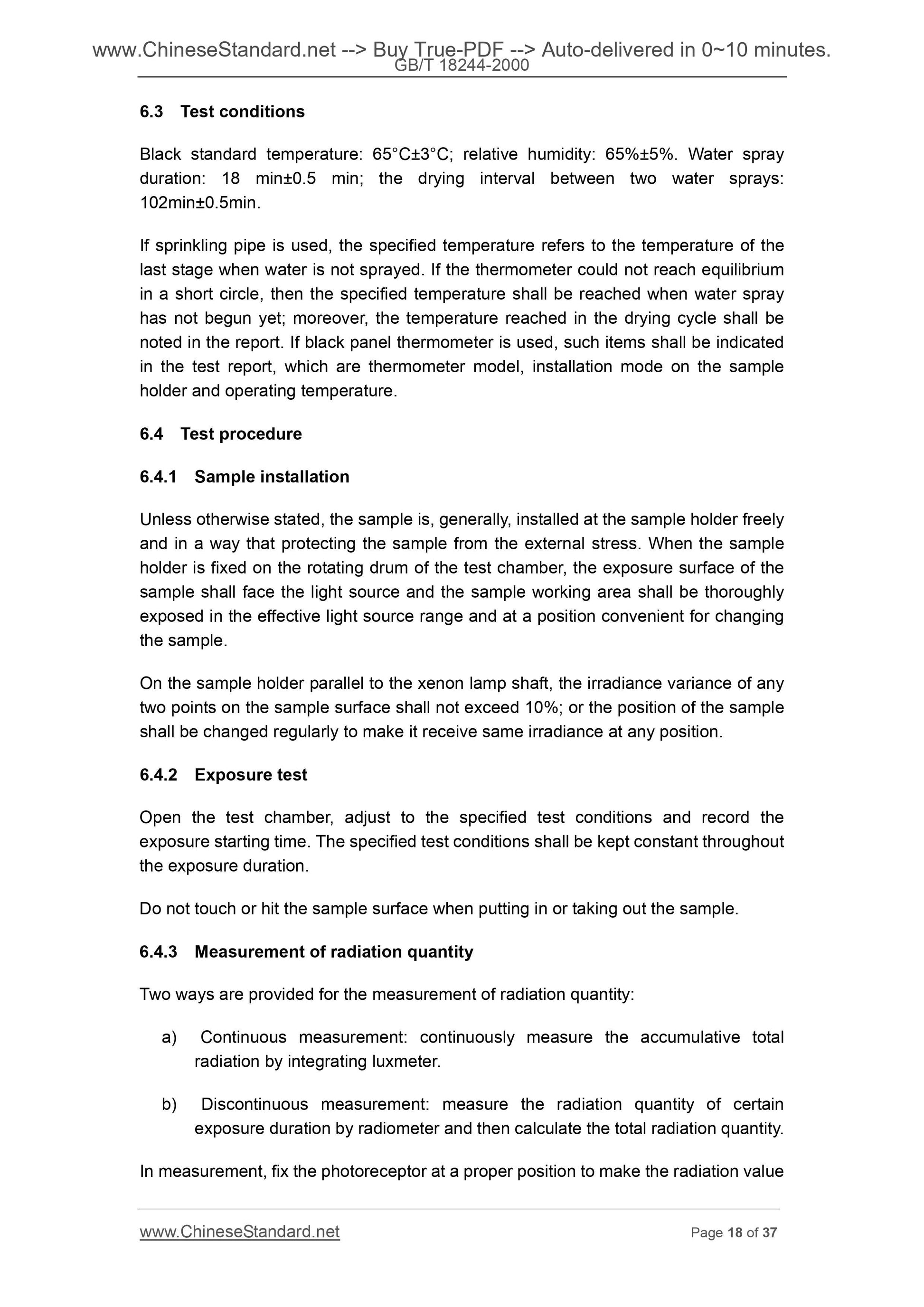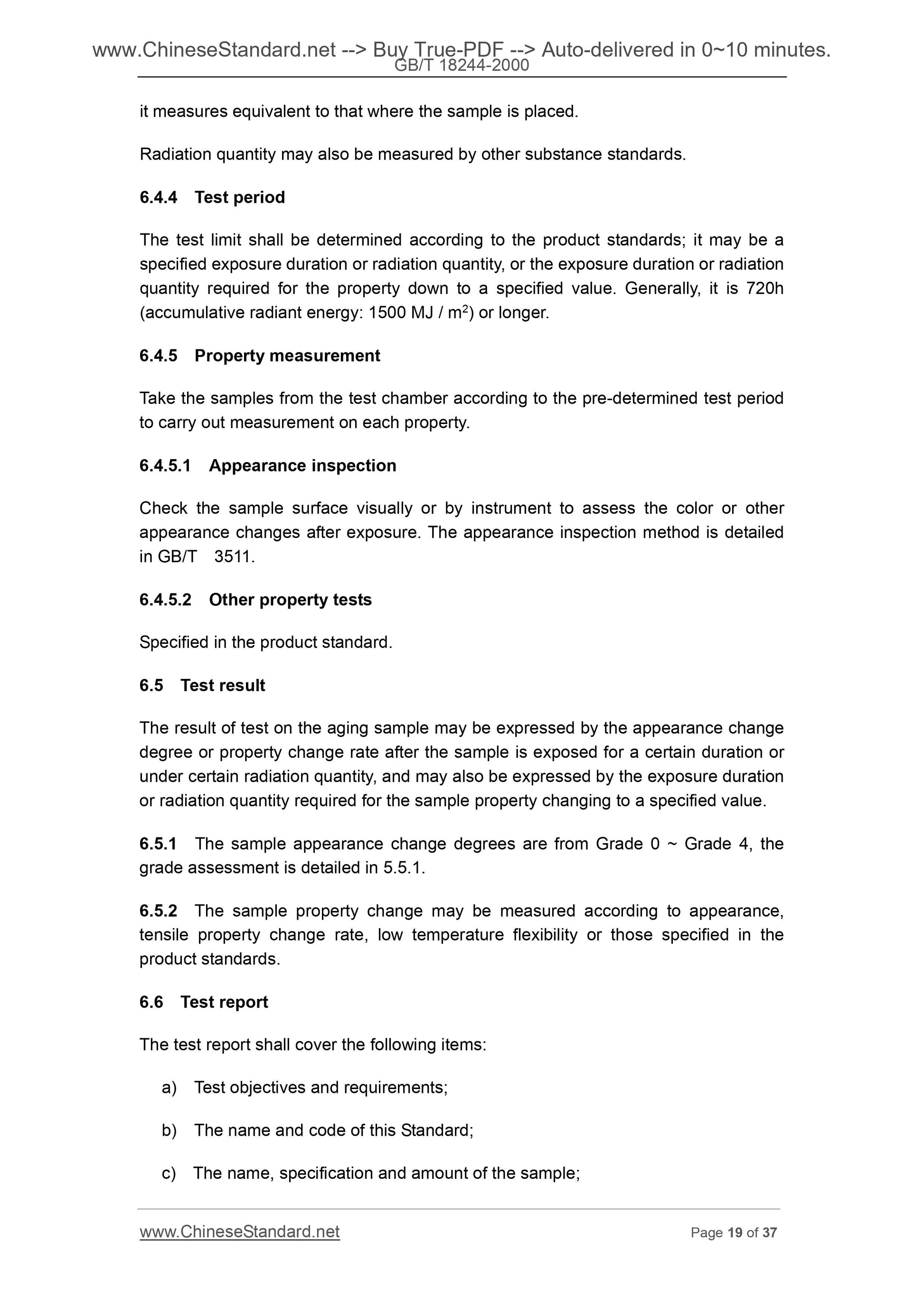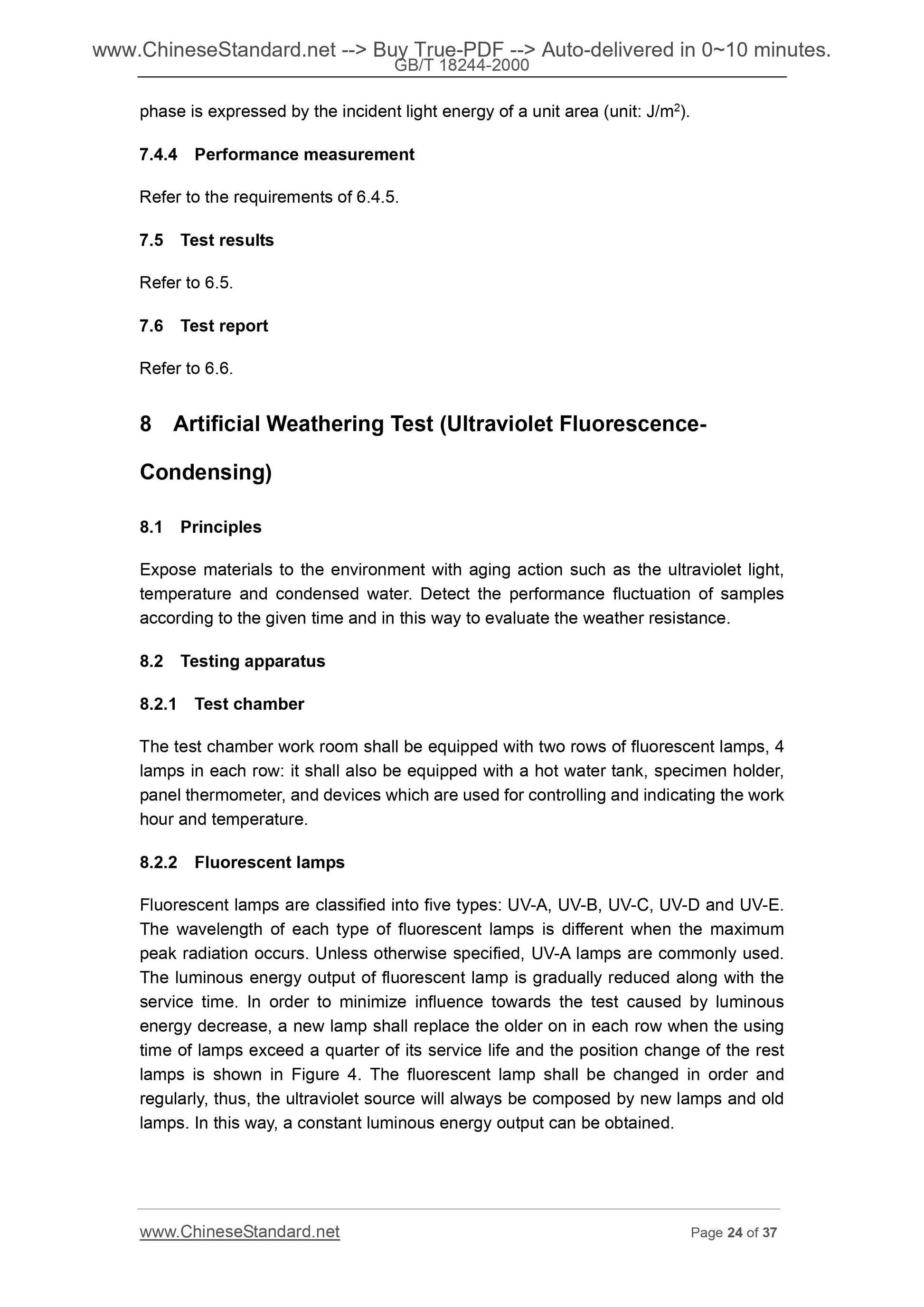1
/
of
12
PayPal, credit cards. Download editable-PDF and invoice in 1 second!
GB/T 18244-2000 English PDF (GB/T18244-2000)
GB/T 18244-2000 English PDF (GB/T18244-2000)
Regular price
$135.00
Regular price
Sale price
$135.00
Unit price
/
per
Shipping calculated at checkout.
Couldn't load pickup availability
GB/T 18244-2000: Test methods for resistance to weathering of building water proofing materials
Delivery: 9 seconds. Download (and Email) true-PDF + Invoice.Get Quotation: Click GB/T 18244-2000 (Self-service in 1-minute)
Newer / historical versions: GB/T 18244-2000
Preview True-PDF
Scope
This Standard specifies the test methods for hot air aging, ozone aging and artificialweathering accelerated aging (xenon arc lamp, carbon lamp and UV fluorescence
lamp).
This Standard is applicable to the comparison between the aging-resistant
performance of pitch-based rolls and paints, high polymer rolls and paints used for
building water proofing work. Other building water proofing materials may also adopt
by reference.
Basic Data
| Standard ID | GB/T 18244-2000 (GB/T18244-2000) |
| Description (Translated English) | Test methods for resistance to weathering of building water proofing materials |
| Sector / Industry | National Standard (Recommended) |
| Classification of Chinese Standard | Q17 |
| Classification of International Standard | 91.120.30 |
| Word Count Estimation | 18,139 |
| Date of Issue | 2000-10-27 |
| Date of Implementation | 2001-05-01 |
| Quoted Standard | GB 250-1995; GB 730-1998; GB/T 3511-1983; GB/T 16777-1997 |
| Adopted Standard | JIS K7212-1995; NEQ; ISO 1431-1-1989; NEQ; ISO 4892-1994; MOD |
| Issuing agency(ies) | State Quality and Technical Supervision |
| Summary | This standard specifies: hot air aging, ozone aging, artificial climate accelerated aging (xenon arc lamp, a carbon arc lamp, ultraviolet fluorescent) Test method, This standard applies to: building waterproof engineering such as bitumen-based membranes and coatings resistant aging performance comparison. Other buildings may also refer to the use of waterproof material. |
Share
